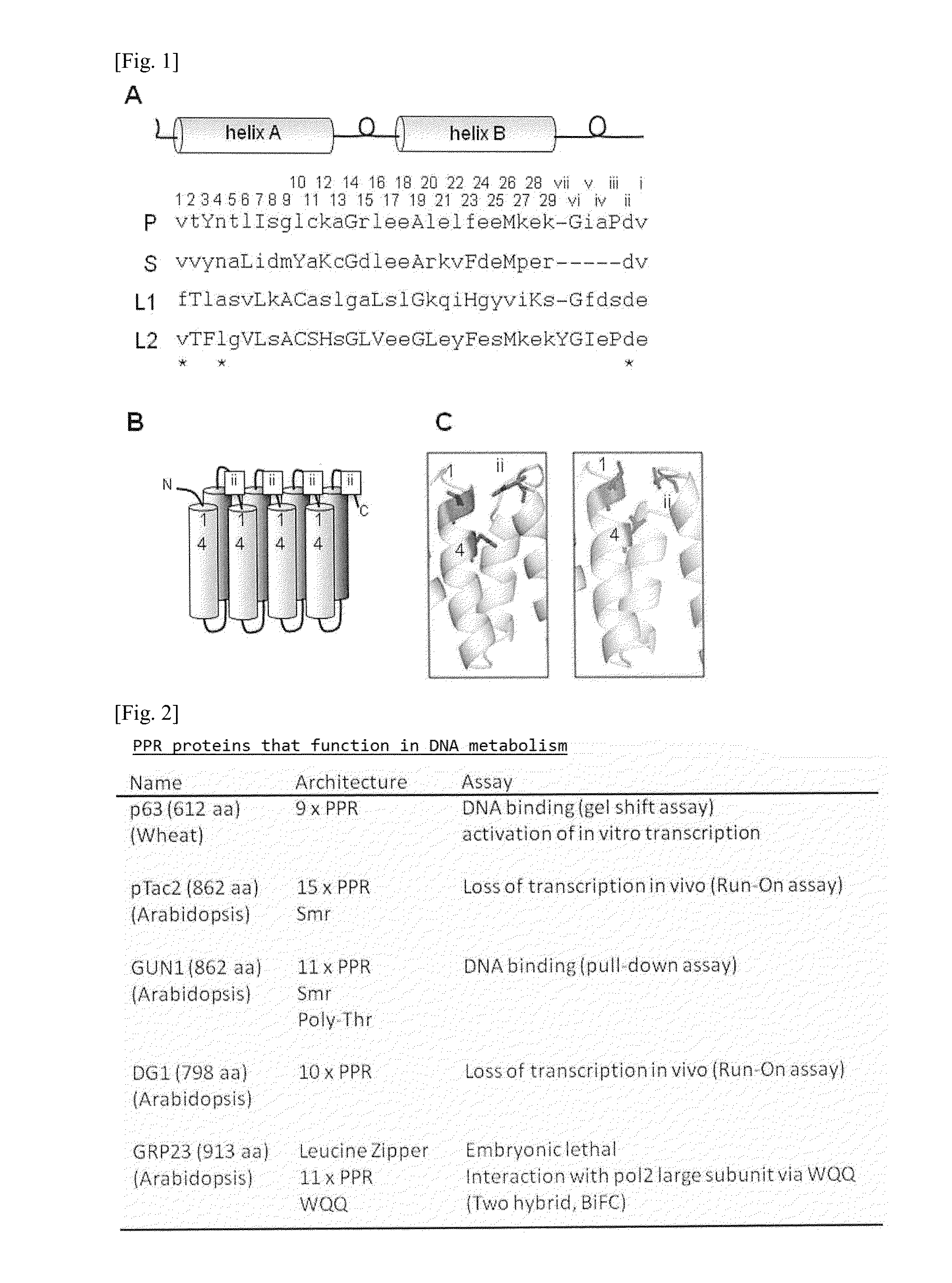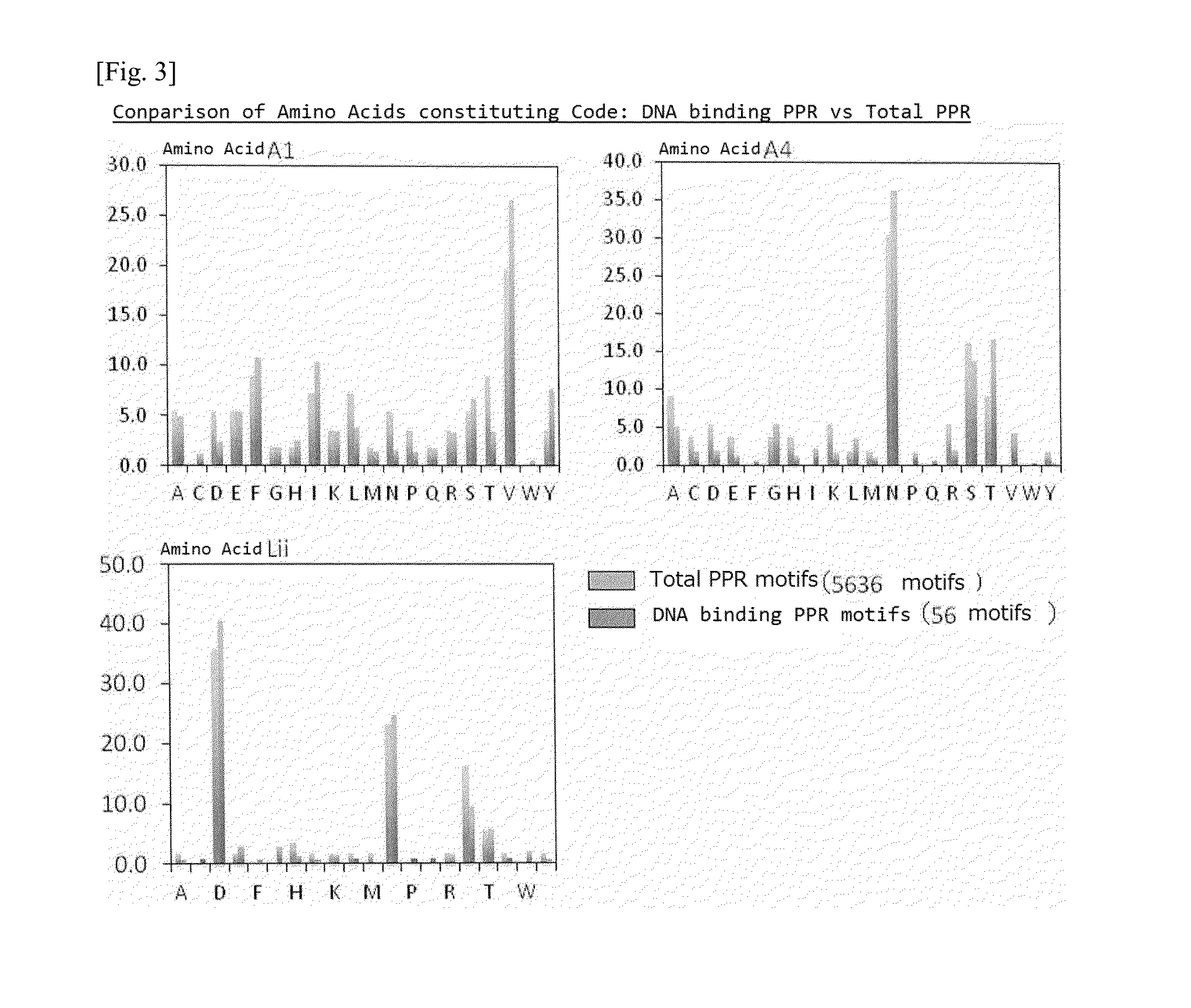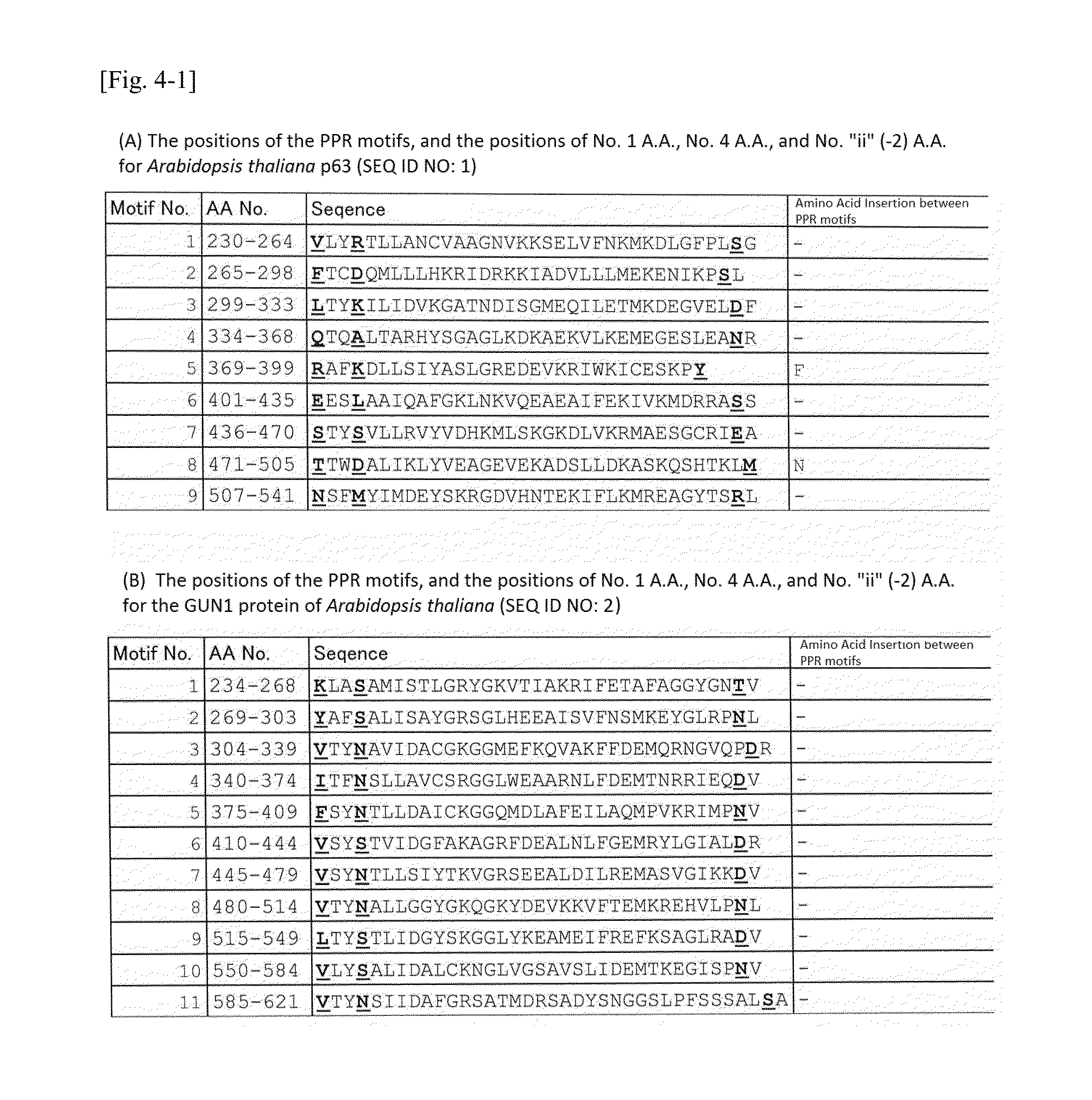Dna-binding protein using ppr motif, and use thereof
a dna-binding protein and motif technology, applied in the field of proteins, can solve the problems of low use rate of zfns, and limited types of such protein factors, and achieve the effect of increasing the possibility of use and promoting the transcription of the target dna
- Summary
- Abstract
- Description
- Claims
- Application Information
AI Technical Summary
Benefits of technology
Problems solved by technology
Method used
Image
Examples
example 1
Collection of PPR Proteins and Target Sequences Thereof Used for DNA Edition
[0136]By referring to the information provided in the prior art references (Non-patent documents 11 to 15), structures and functions of the p63 protein (SEQ ID NO: 1), GUN1 protein (SEQ ID NO: 2), pTac2 protein (SEQ ID NO: 3), DG1 protein (SEQ ID NO: 4), and GRP23 protein (SEQ ID NO: 5) were analyzed.
[0137]To the PPR motif structures in such proteins, amino acid numbers defined in the present invention were imparted together with the information of the Uniprot database (http: / / www.uniprot.org / ). The PPR motifs contained in the five kinds of PPR proteins of Arabidopsis thaliana (SEQ ID NOS: 1 to 5) used for the experiment, and the amino acid numbers thereof are shown in FIG. 3.
[0138]Specifically, amino acid frequencies for the amino acids at the three positions (No. 1 A.A., No. 4 A.A., and No. “ii” (-2) A. A.) responsible for the nucleic aid recognition codes in the PPR motifs considered to be important at th...
example 2
Evaluation of Sequence-Specific DNA-Binding Ability PPR Molecules
[0147]In this example, artificial transcription factors were prepared by fusing VP64, which is a transcription activation domain, to the three kinds of DNA-binding type (expectedly) PPR molecules, p63, pTac2, and GUN1, and by examining whether they could activate luciferase reporters each having a corresponding target sequence in a human cultured cell, whether the PPR molecules had a sequence-specific DNA-binding ability or not was determined (FIG. 5).
(Experimental Method)
1. Preparation of PPR-VP64 Expression Vector
[0148]Only the parts corresponding to the PPR motifs in the coding sequences of p63, pTac2, and GUN1 were prepared by artificial synthesis. For the DNA synthesis, the artificial gene synthesis service of Biomatik was used. The pCS2P vector having the CMV promoter was used as a backbone vector, and each synthesized PPR sequence was inserted into it. Further, the Flag tag and nuclear transfer signal were inser...
PUM
| Property | Measurement | Unit |
|---|---|---|
| Mn | aaaaa | aaaaa |
| degree of freedom | aaaaa | aaaaa |
| stability | aaaaa | aaaaa |
Abstract
Description
Claims
Application Information
 Login to View More
Login to View More - R&D
- Intellectual Property
- Life Sciences
- Materials
- Tech Scout
- Unparalleled Data Quality
- Higher Quality Content
- 60% Fewer Hallucinations
Browse by: Latest US Patents, China's latest patents, Technical Efficacy Thesaurus, Application Domain, Technology Topic, Popular Technical Reports.
© 2025 PatSnap. All rights reserved.Legal|Privacy policy|Modern Slavery Act Transparency Statement|Sitemap|About US| Contact US: help@patsnap.com



